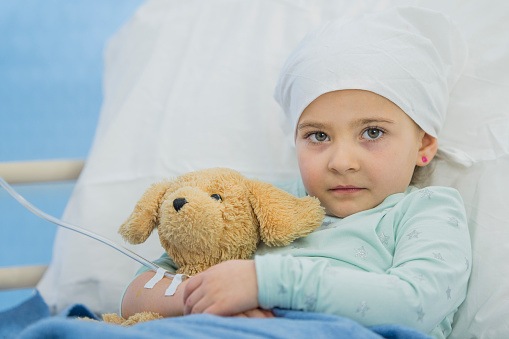
Despite advances in treatment, childhood survivors of cancer may still face a decreased life expectancy, new research suggests.
“Advances in pediatric cancer therapy during the past few decades have been associated with remarkable increases in 5-year survival rates, with more than 80% of children and adolescents who receive a diagnosis today expected to live at least 5 years,” according to the study authors. “By 2020, the population of childhood cancer survivors is projected to grow to more than 500 000 individuals. As adults, childhood cancer survivors face substantially elevated risks of serious long-term morbidity and premature death, with nearly 1 in 3 survivors reporting a severe or life-threatening condition 20 years after diagnosis.”
This study used data from the Childhood Cancer Survivor Study on five-year childhood cancer survivors who received their diagnosis between 1970 and 1999. The researchers employed a microsimulation model of competing mortality risks that encompassed late recurrence; treatment-related late effects, including health-related (subsequent cancers, cardiac events, pulmonary conditions, etc.) and external causes; and U.S. background mortality rates. Patients were stratified by treatment strategy (none or only surgery, chemotherapy, radiotherapy, and chemotherapy plus radiotherapy), as well as acute lymphoblastic leukemia status by era: 1970-79, 1980-89, and 1990-99. The main outcomes were conditional life expectancy (how many years a five-year survivor can expect to live); cumulative cause-specific mortality risk; and 10-year mortality risks conditional on reaching ages 30, 40, 50, and 60 years.
The study population was 56% male with a mean (SD) age at diagnosis of 7.3 (5.6) years. The conditional life expectancy was 48.5 years (95% uncertainty level [UI], 47.6–49.6 years) for patients diagnosed in 1970-79, 53.7 years (95% UI, 52.6–54.7 years) for patients diagnosed in 1980-89, and 57.1 years (95% UI, 55.9–58.1 years) for patients diagnosed in 1990-99. Childhood cancer survivors compared to those who never had cancer had a decreased life expectancy of 16 years (95% UI, 15.5–17.5 years) or 25% (95% UI, 24%–27%), 12.3 years (95% UI, 11.3–13.4 years) or 19% (95% UI, 17%–20%), and 9.2 years (95% UI, 8.3–10.4 years) or 14% (95% UI, 13%–16%) for patients diagnosed in 1970-79, 1980-89, and 1990-99, respectively. Treatment trends changed during the course of the study; the 1970-79 group was much less likely to receive chemotherapy alone than the 1990-99 group (18% vs. 54%), while the life expectancy gap decreased from 11.0 years (95% UI, 9.0–13.1 years) to 6.0 years (95% UI, 4.5–7.6 years). Meanwhile, “during the same time frame, only modest improvements in the gap in life expectancy were projected for survivors treated with radiotherapy (21.0 years [95% UI, 18.5-23.2 years] to 17.6 years [95% UI, 14.2-21.2 years]) or with radiotherapy and chemotherapy (17.9 years [95% UI, 16.7-19.2 years] to 14.8 years [95% UI, 13.1-16.7 years]),” the study authors observed. When stratified by diagnosis, the majority of patients had acute lymphoblastic leukemia, for which the life expectancy dap decreased from 14.7 years (95% UI, 12.8–16.5 years) to 8.0 years (95% UI, 6.2–9.7 years) over the study period.
The study appeared in JAMA Oncology.
“Our findings highlight the need for continued monitoring of survivors’ health to manage late mortality risks and underscore the need for new therapeutic approaches to minimize early mortality risks, especially for cancer diagnoses for which radiotherapy remains a key component of therapy,” the researchers concluded.







 © 2025 Mashup Media, LLC, a Formedics Property. All Rights Reserved.
© 2025 Mashup Media, LLC, a Formedics Property. All Rights Reserved.